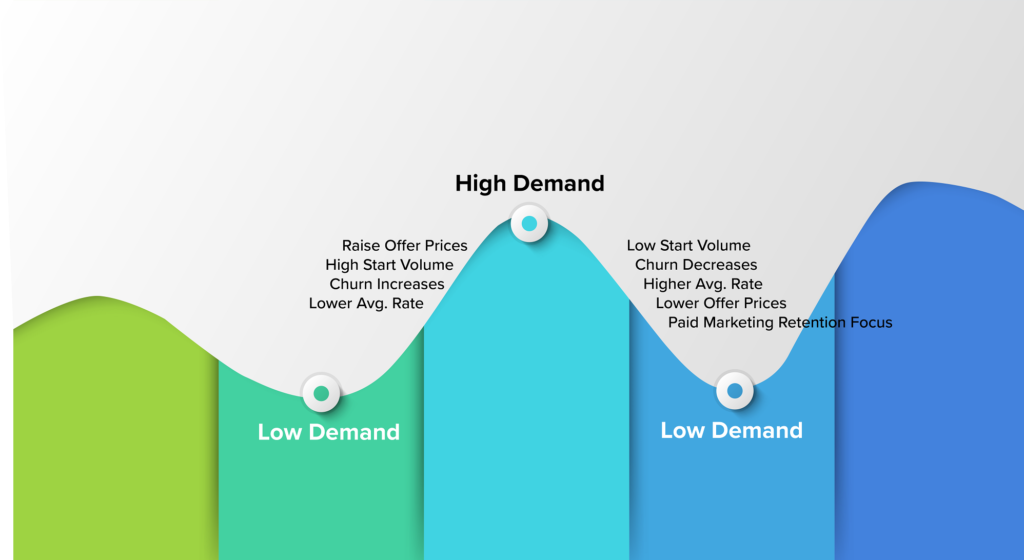Riding the wave of subscription demand during a news cycle
Many publishers are experiencing a softening of demand for new subscriptions in 2021 as the big stories of 2020, the Covid pandemic and the US election cycle, no longer generate the same traffic to news sites they once did.
The ebb and flow of subscription demand is a pattern observed for decades in the newspaper business, and this blog post will share a few lessons to help publishers maximize their subscription revenue and customer lifetime value. We will use a metaphor of riding a wave as we discuss how best to manage a subscription business during a news cycle.

Know what to expect
The first step in successfully riding the wave is to anticipate what will happen and take appropriate actions. When news demand spikes, new acquisition volume will go up, average rates will go down, and churn will increase. Average rates will decrease due to the greater proportion of subscribers on promotional offers, and churn will increase due to high number of “new” subscribers that are more likely to stop their subscriptions.
Depending on the nature of your digital products and audiences, during periods of high demand, there may be opportunities to increase the average prices of your subscription offers. Increasing the percentage of premium content, the content only available to paying subscribers, is another effective tactic. Reducing paid marketing channels during this time can save costs since much of the new traffic and starts will occur organically.
As the surge in demand subsides, we will see the opposite pattern in key metrics, with new start volume declining, average rates increasing, and churn declining. Average rates will increase due to new customers reaching the end of their promotion offers, low-rate customers churning faster than high-rate customers, and existing subscribers receiving annual increases.
During this period of low demand, publishers can sustain new subscription sales volume by increasing paid marketing channels, offering more aggressive acquisition offers, and marketing to former subscribers that have recently stopped. To grow revenue without a surge in new subscriptions, selectively increasing rates to their subscribers using strategic pricing tactics will minimize risk of volume loss and grow revenue.
Focusing on retention during the low-demand phase of the cycle will enable long-term growth of volume, rates, and revenue. A few helpful retention tactics to consider:
- Monitor disengagement of subscribers to target re-engagement campaigns to at-risk customers.
- Use strategic retention offers for those customers that contact customer service either through the web site or call center to cancel their subscription to keep them on the highest rate they will pay. Many publishers have standard retention offers that are lower than needed for many subscribers.
- Promote content to subscribers in their areas of interest and use other opportunities to personalize the relationship with a customer.
- Send “value letters” to customers promoting the value of their subscription, the importance of journalism to the community, the community of readers the subscriber belongs to, or other messaging targeted to your audience.
- Employ strategic pricing tactics to minimize churn from price increases from high-risk customer segments.
Riding the wave
Knowing what to expect from key metrics during a news cycle will enable you to proactively adjust your subscription operations and avoid common mistakes. Many publishers are growing digital subscriptions rapidly, which can mask some of the cyclical patterns, but there is still value in modifying subscription offers, marketing spend, and retention tactics as demand fluctuates.
Modifying your subscription business tactics to maximize subscription volumes and customer lifetime value over a wave in news demand is similar to surfing; it can be tough to start but easy with practice.
There are many case studies and benchmarks to share in the areas discussed in this blog post. Please do not hesitate to contact us for more information or with any questions.

